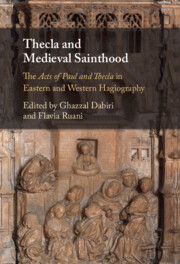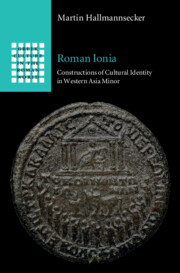Refine search
Actions for selected content:
23990 results in Ancient history
Index
-
- Book:
- Reading Kenneth Frampton
- Published by:
- Anthem Press
- Published online:
- 09 December 2022
- Print publication:
- 10 May 2022, pp 207-212
-
- Chapter
- Export citation
5 - The Agency of the Critical
-
- Book:
- Reading Kenneth Frampton
- Published by:
- Anthem Press
- Published online:
- 09 December 2022
- Print publication:
- 10 May 2022, pp 105-138
-
- Chapter
- Export citation
1 - The Violence of Quotation
-
- Book:
- Reading Kenneth Frampton
- Published by:
- Anthem Press
- Published online:
- 09 December 2022
- Print publication:
- 10 May 2022, pp 13-32
-
- Chapter
- Export citation
4 - In Defense of Architecture
-
- Book:
- Reading Kenneth Frampton
- Published by:
- Anthem Press
- Published online:
- 09 December 2022
- Print publication:
- 10 May 2022, pp 81-104
-
- Chapter
- Export citation
Frontmatter
-
- Book:
- Reading Kenneth Frampton
- Published by:
- Anthem Press
- Published online:
- 09 December 2022
- Print publication:
- 10 May 2022, pp i-iv
-
- Chapter
- Export citation
3 - The Vicissitudes of a Critical History
-
- Book:
- Reading Kenneth Frampton
- Published by:
- Anthem Press
- Published online:
- 09 December 2022
- Print publication:
- 10 May 2022, pp 59-80
-
- Chapter
- Export citation
2 - A Trilogy
-
- Book:
- Reading Kenneth Frampton
- Published by:
- Anthem Press
- Published online:
- 09 December 2022
- Print publication:
- 10 May 2022, pp 33-58
-
- Chapter
- Export citation
Contents
-
- Book:
- Reading Kenneth Frampton
- Published by:
- Anthem Press
- Published online:
- 09 December 2022
- Print publication:
- 10 May 2022, pp v-vi
-
- Chapter
- Export citation
Introduction
-
- Book:
- Reading Kenneth Frampton
- Published by:
- Anthem Press
- Published online:
- 09 December 2022
- Print publication:
- 10 May 2022, pp 1-12
-
- Chapter
- Export citation
Acknowledgments
-
- Book:
- Reading Kenneth Frampton
- Published by:
- Anthem Press
- Published online:
- 09 December 2022
- Print publication:
- 10 May 2022, pp vii-viii
-
- Chapter
- Export citation
6 - Aalto Contra Mies: A Conundrum?
-
- Book:
- Reading Kenneth Frampton
- Published by:
- Anthem Press
- Published online:
- 09 December 2022
- Print publication:
- 10 May 2022, pp 139-162
-
- Chapter
- Export citation
7 - From the Critical to Resistance
-
- Book:
- Reading Kenneth Frampton
- Published by:
- Anthem Press
- Published online:
- 09 December 2022
- Print publication:
- 10 May 2022, pp 163-198
-
- Chapter
- Export citation

Thecla and Medieval Sainthood
- The Acts of Paul and Thecla in Eastern and Western Hagiography
-
- Published online:
- 06 May 2022
- Print publication:
- 26 May 2022

Roman Ionia
- Constructions of Cultural Identity in Western Asia Minor
-
- Published online:
- 05 May 2022
- Print publication:
- 19 May 2022
Conclusion
-
- Book:
- The Attalids of Pergamon and Anatolia
- Published online:
- 21 April 2022
- Print publication:
- 05 May 2022, pp 354-363
-
- Chapter
- Export citation
Acknowledgments
-
- Book:
- The Attalids of Pergamon and Anatolia
- Published online:
- 21 April 2022
- Print publication:
- 05 May 2022, pp xii-xiv
-
- Chapter
- Export citation
Graphs
-
- Book:
- The Attalids of Pergamon and Anatolia
- Published online:
- 21 April 2022
- Print publication:
- 05 May 2022, pp x-x
-
- Chapter
- Export citation
3 - The King’s Money
-
- Book:
- The Attalids of Pergamon and Anatolia
- Published online:
- 21 April 2022
- Print publication:
- 05 May 2022, pp 129-187
-
- Chapter
- Export citation
6 - Pergamene Panhellenism
-
- Book:
- The Attalids of Pergamon and Anatolia
- Published online:
- 21 April 2022
- Print publication:
- 05 May 2022, pp 283-353
-
- Chapter
- Export citation
Introduction
-
- Book:
- The Attalids of Pergamon and Anatolia
- Published online:
- 21 April 2022
- Print publication:
- 05 May 2022, pp 1-33
-
- Chapter
- Export citation
